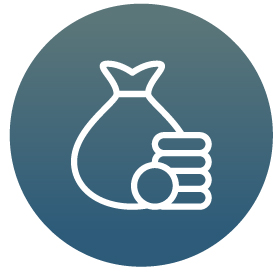By Dr Voon Yuen Hoong and Liaw Pey Shan
The accounting treatments for income, expenses, assets and liabilities presented in the financial statements are often not aligned with tax treatments, both in terms of timing of recognition and characterisation of the transaction itself. Even experienced tax accountants may get caught in these contradictions. As such, tax accountants need to be extra vigilant to ensure that correct tax treatments are applied to all accounting transactions when preparing a company’s tax computation.
One item that stands out is the treatment of costs incurred on plant and machinery acquired for business operations. For tax deduction purposes, depreciation is not recognised as a deductible expense; instead, businesses have to compute tax depreciation known as “capital allowances” in accordance with the provisions of Schedule 3 of the Income Tax Act 1967 (ITA).
Tax Treatments of Assets
Pursuant to Section 42(1) of the ITA, capital allowances (commonly known as CA), are allowed as a deduction in computing the chargeable income and thus the tax liability of a company. The specific rules for CA relief are set out in Schedule 3 of the ITA. Not all capital assets recognised for accounting purposes are eligible for CA as they may not fall within the definition of “plant” in Paragraph 70A of Schedule 3 of the ITA which defines “plant” as follows:
“an apparatus used by a person for carrying on his business but does not include a building, an intangible asset, or any asset used and that functions as a place within which a business is carried on.”
To be eligible for CA, the company must be able to satisfy the IRB that it has fulfilled the following conditions:
(a) It is carrying on a business during the basis period;
(b) It has incurred qualifying expenditure (i.e. eligible capital expenditure) in the basis period;
(c) The qualifying expenditure incurred was used for the purposes of its business, and
(d) it is the owner of the asset at the end of the basis period.
An initial allowance, which is fixed at the rate of 10% or 20% on the qualifying cost of the asset, is allowed in the first year of acquisition. Annual allowances at varying rates, e.g. 3%, 10%, 14% or 20% are to be given yearly until the qualifying expenditure is exhausted or the asset is disposed of.
Other important rules to watch out for include those pertaining to disposal of assets and carry-forward of the excess capital allowances to future years due to insufficient current year income. On a disposal or write-off of an asset, a balancing allowance or balancing charge has to be computed by comparing the tax written down value (TWDV) of the asset with the disposal price. Where an asset is disposed of within 2 years from the date of acquisition, the CA claimed previously shall be withdrawn. CA that are unutilised during the year can be carried forward indefinitely for set off against future income but restricted for offset only against income from the same business source. The only circumstance where unutilised CA vanishes automatically and cannot be carried forward to future years is when there is a substantial change of shareholders (holding more than 50% of the company’s equity), but operating companies are given a concession to dispense with the rule.
What Are the Common Errors To Avoid?
As much as companies wish to maximise the claim of CA on the capital expenditure incurred, unwanted errors can be made in the tax computation process. Some of the notable common errors made by companies and the resulting tax implications are discussed below:
Identifying Qualifying Expenditure

Capital expenditure which is not eligible for CA is often wrongly treated as qualifying expenditure due to the mismatch between the function of the assets and the industry that the company is operating in. An asset that is claimable when used in a certain industry may not qualify for claim in another industry. For instance, decorative assets such as lighting, paintings and sculptures incurred by a hotel operator may qualify for a CA claim. In contrast, the same assets used by a software developer will not qualify for CA. Why is this so? It is settled tax law that an important aspect of a hotel operator’s business is to provide ambience for its patrons such as that created by installing special lighting and placing beautiful sculpture to enhance the atmosphere to attract more guests. However, the argument of using “ambience” cannot be applied to operators of grocery stores, pharmacies or software developers since their businesses are largely different from that of a hotel operator.
Another point is that assets that form an integral part of an office building structure (e.g. fixed partitions, flooring, wall tiles, window frames, etc.) which function as a “setting” within which a business is carried on, are not eligible for CA since the office building by itself is not a type of qualifying expenditure.
Therefore, one is required to conduct a careful assessment of the nature of the business and the assets acquired before making a claim in the tax computation that is technically defensible.
New Asset Not in Use Yet

During the financial year, a company may have ordered a new asset and made payment to the vendor. For CA purposes, as long as the new asset is not deployed for operations in the current year, the company is not entitled to claim CA on the asset. It is compelled to defer the CA claim to a future year when the asset is put in use in its business under Paragraph 55, Schedule 3 of the ITA.
A typical example is when a manufacturing company embarks on building a new production line to expand its existing production capacity. The project may take more than one financial year from start (planning the production layout and sourcing for new machines) to completion (delivery and installation of machines). The vendors may have issued the invoices to the company and installed the machines in a year (say 2022), but the commercial production could only take place in say 2023 after the entire system has been set up. For accounting purposes, the costs are recognised in the financial statements in 2022 but for tax purposes, the qualifying expenditure is deemed to be incurred in 2023 when the machines are put into use by the company. If the company proceeds with the claim of CA in 2022, it would have over-claimed CA in that year.
Transfer of Assets Between Related Companies in Malaysia

Sales of assets from a domestic company (Co-A) to another related company in Malaysia (Co-B) have unique tax treatments. These types of transactions have to comply with the specific tax rules in Paragraphs 38 to 40, Schedule 3 of the ITA (“Controlled Transfer Rules”) for both the disposer (seller) and the acquirer (buyer), where:
- The disposer (Co-A) is deemed to have transferred the asset to the acquirer based on the tax residual expenditure or at the tax written down value (TWDV) instead of the sales consideration. No balancing adjustment in the form of either a balancing allowance (loss on disposal for tax purposes) or balancing charge (gain on disposal for tax purposes) is imposed on the disposer.
- The acquirer (Co-B) is deemed to have acquired the asset at the disposer’s qualifying expenditure (instead of the purchase consideration) and has to claim the remaining CA based on the disposer’s TWDV.
Effectively, the total capital allowances claimed by Co-A and Co-B shall not exceed the original qualifying expenditure of the asset incurred by the disposer.
The above Controlled Transfer Rules may come as a surprise for many companies during a tax audit if they have failed to identify transfers of assets between their related companies and prescribe the correct tax treatment. The outcome is that Co-A had wrongly computed the balancing adjustment and Co-B had claimed an incorrect CA amount on assets acquired from the seller.
Assets Used by Related Companies

There are instances where a company pays for the cost of a new asset on behalf of its related company without recovering such cost from the related company. This may happen if the related company is suffering from financial difficulties or is unable to obtain credit facilities to finance the acquisition. Technically, a person (i.e. paying company) who incurs the qualifying expenditure is not entitled to claim CA on an asset if the asset is used for the business of another person (i.e. operating company). In this instance, the paying company does not meet the criteria for a CA claim because the asset is not used in its business but used instead in the business of its related company. An error in the tax computation of the first company (which pays for the asset) can then occur if the asset is not separately identified and excluded from the CA computation.
On the flip side, the operating company is not entitled for the CA claim as it did not pay for the cost of the asset. This is a situation of double jeopardy where both companies are not entitled to the CA although costs have been incurred on the new asset.
Failure to Maximise CA Claim

Some companies may fail to maximise their CA claims for capital expenditure incurred due to lack of information in the supporting invoices. Examples of the expenditure that may have been omitted for CA claims are as follows:
- Demountable office partitions
Demountable office partitions are claimable for CA purposes if they are movable and can be relocated easily. Arguably, the partition does not form an integral and fixed part of the building, and hence, does not qualify as ordinary plant for CA purposes.
- Installation work
Expenditure incurred on the alteration of an existing building for the purposes of installing a machine or plant and other expenditure incurred incidentally to the installation thereof are eligible for CA. Applying this principle in practice, electrical and water systems which form an integral part of a plant and machine that qualify for CA would be considered as plant. Examples include wiring for computers, escalators, surge protectors, solar system, water cooling systems, security system, etc.
- Apparatus in a building
Plant that is eligible for CA includes “apparatus” which is interpreted by dictionaries as “a group or combination of instruments, machinery, tools, materials, etc., having a particular function or intended for a specific use”. Hence, assets that do not form an integral and fixed part of the permanent structure of the building such as fire alarms and fire protection systems, sprinkler systems, security and building management systems, carpets, signage, built-in cabinets, etc. can potentially qualify for the claim of capital allowances.
Documentation

Last but not least, all CA claims must be evidenced by proper documentation. A set of proper documentation serves as a good defence for the company during a tax audit or investigation. The documents to retain include suppliers’ invoices, proof of payment, brochures, catalogues, warranty cards, accounting ledgers, asset registers, pictures of the asset, evidence on location of the asset, etc. It is almost certain that the tax audit officer will call for such documents for their examination during their tax review exercise. Under the law, these records should be kept for at least 7 years to facilitate tax review by the IRB.
There had been instances where companies were not able to produce sufficient records required by the IRB as they may have been misplaced. Without satisfying the IRB with the relevant records, the IRB has the right to deny the CA benefits previously claimed by the company, resulting in additional tax and penalties. It is therefore imperative to put in place a good house-keeping system as a safeguard against untoward outcomes.
Conclusion
It is every company’s wish to maximise their claim for CA. Every Ringgit spent will then be translated into lesser taxable income. To this end, businesses are encouraged to undertake a CA maximisation study on their large-scale asset acquisitions such as the construction of office premises. The cost elements qualifying for CA would then be segregated and CA claimed for those costs with supporting documentation. This set of documents serves to mitigate the risk of non-compliance with tax legislation and maximises the CA claim, thus resulting in tax savings. An error-free tax computation will facilitate a smooth audit by the Inland Revenue Board (“IRB”) and mitigates any tax risks. Otherwise, additional taxes and penalties may await the unprepared taxpayer.
Dr. Voon Yuen Hoong is Executive Director and Liaw Pey Shan is Associate Director of Crowe KL Tax Sdn. Bhd.







